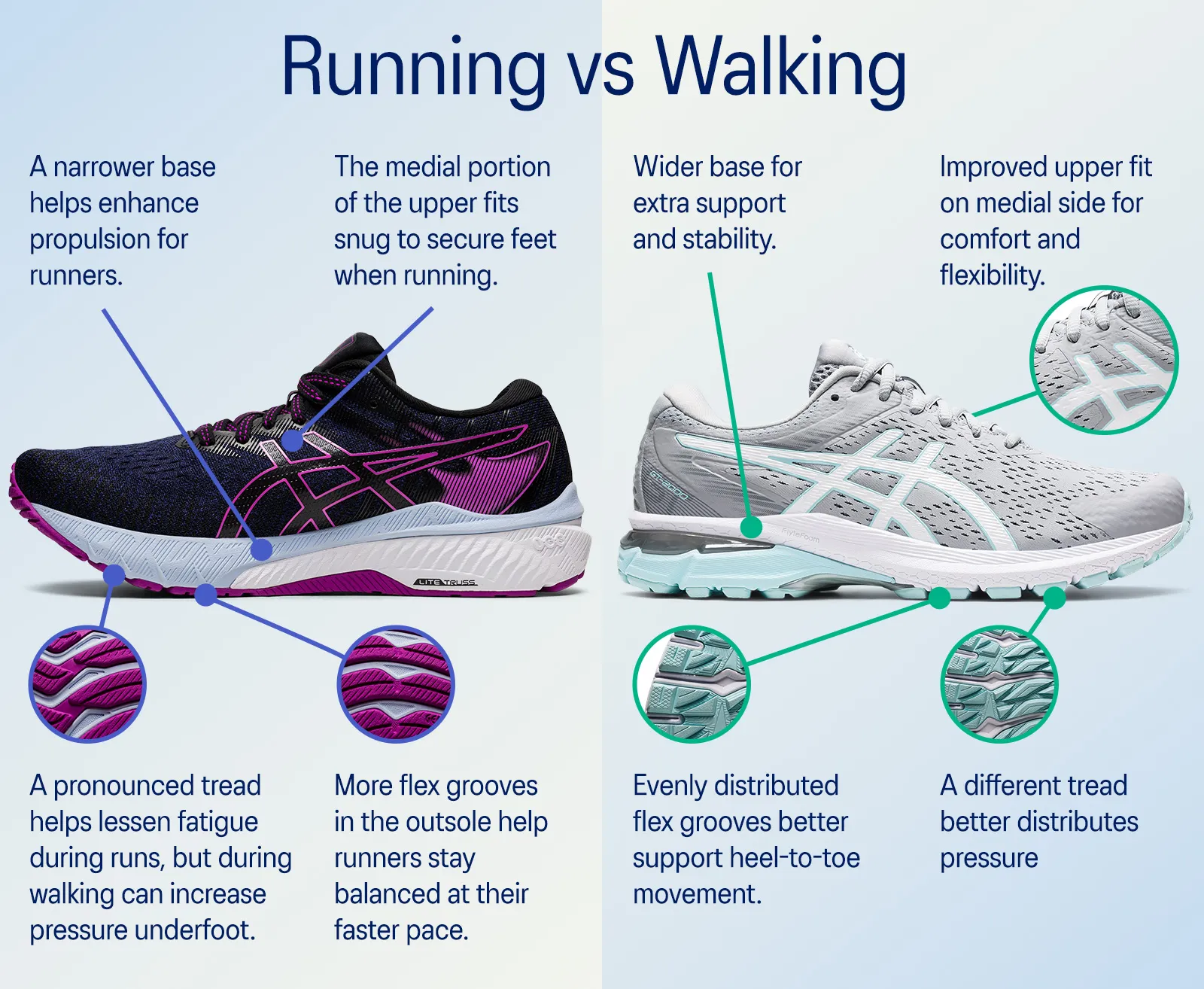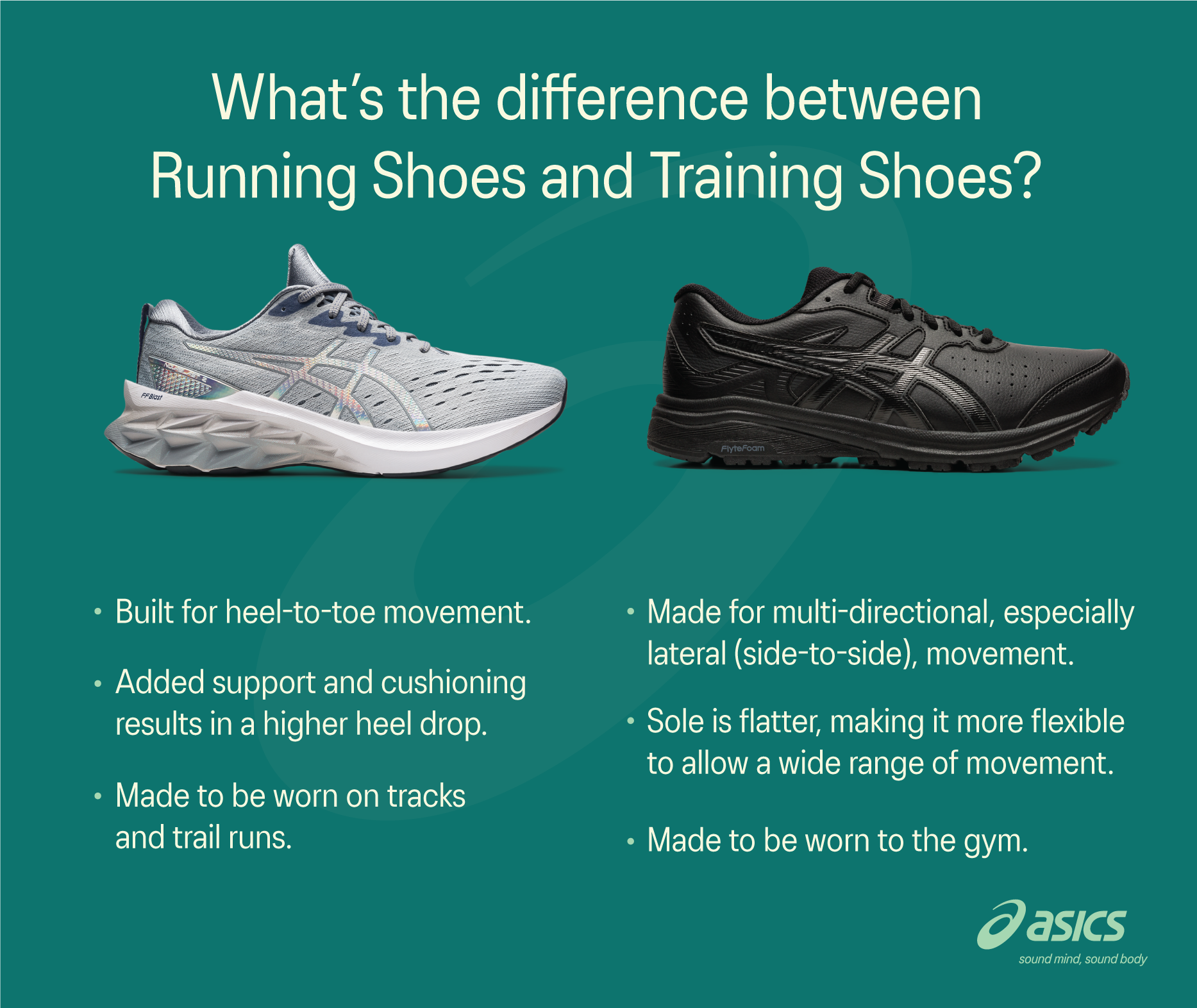Discover The Perfect Fit: Running vs Walking Shoes For Your Active Lifestyle
Choosing the right footwear can transform your daily activities, whether you’re pounding the pavement or enjoying a leisurely stroll. The debate between running vs walking shoes isn’t just about preference; it’s rooted in biomechanics and performance needs. Let’s dive into how these shoes differ and why selecting the correct pair matters for your health and enjoyment.
Understanding the Biomechanics: Why Design Matters
When you run, your feet endure forces up to three times your body weight with each stride, requiring shoes that offer maximum cushioning and shock absorption. In contrast, walking involves a rolling motion from heel to toe, with lower impact, necessitating flexibility and support for comfort over longer periods. Scientific studies from institutions like Harvard University highlight that improper footwear can lead to injuries such as plantar fasciitis or shin splints, emphasizing the importance of matching shoe design to your activity. For instance, running shoes often feature thicker midsoles and advanced materials like ethylene-vinyl acetate (EVA) foam to dissipate impact, whereas walking shoes prioritize a lower heel-to-toe drop to promote a natural gait. By recognizing these biomechanical differences, you can avoid common pitfalls and enhance your performance, whether you’re training for a marathon or taking a daily walk in the park.

Cushioning and Support: The Core of Comfort
Cushioning in running vs walking shoes serves distinct purposes; running shoes employ gel or air-based systems to handle repetitive high-impact landings, while walking shoes use softer, more evenly distributed cushioning to reduce fatigue during prolonged use. According to experts on platforms like Quora and Wikipedia, running shoes often include features like medial posts for overpronation control, which aren’t as critical in walking shoes. A study from the University of Colorado Boulder confirms that adequate cushioning can improve energy return by up to 10%, making runs more efficient. In walking, however, excessive cushioning might hinder stability, leading to ankle rolls. Think of it this way: running shoes are like sports cars built for speed and shock absorption, whereas walking shoes resemble comfortable sedans designed for smooth, long drives. By evaluating your activity level, you can invest in shoes that provide the right balance, preventing injuries and boosting your overall experience.

Durability and Materials: What Lasts Longer?
The materials in running vs walking shoes are engineered for durability based on usage patterns. Running shoes typically use lightweight, breathable meshes and robust rubber outsoles to withstand abrasive surfaces, as noted in reviews from authoritative sites like Runner’s World. In comparison, walking shoes focus on leather or synthetic uppers for all-day comfort and weather resistance. Data from Baidu Baike indicates that running shoes may last 300-500 miles before cushioning degrades, while walking shoes can endure longer due to lower stress. For example, a well-known YouTube fitness influencer, Joe Decker, once stated, “Investing in quality materials isn’t a luxury; it’s a necessity for injury prevention.” This perspective underscores that choosing durable shoes not only saves money in the long run but also ensures consistent support. Consider the surfaces you frequent—if you’re a trail runner, opt for reinforced toes, whereas urban walkers might prioritize water-resistant features.

Making the Choice: How to Decide Based on Your Lifestyle
Your decision in the running vs walking shoes debate should align with your fitness goals and daily routines. If you’re mixing activities, look for hybrid models that offer versatility without compromising on key features. Websites like Wenku suggest trying on shoes later in the day when feet are naturally swollen for a better fit. Remember, a proper fit can prevent blisters and improve posture, as highlighted in literature from Stanford University. Don’t forget to check for discounts from reputable retailers; many offer seasonal sales that make premium brands accessible. Ultimately, the right pair will feel like an extension of your body, empowering you to stay active and healthy.

Embrace the journey of finding your ideal footwear—it’s a step toward a more energized and injury-free life. With the insights on running vs walking shoes, you’re equipped to make an informed choice that supports every move you make.
